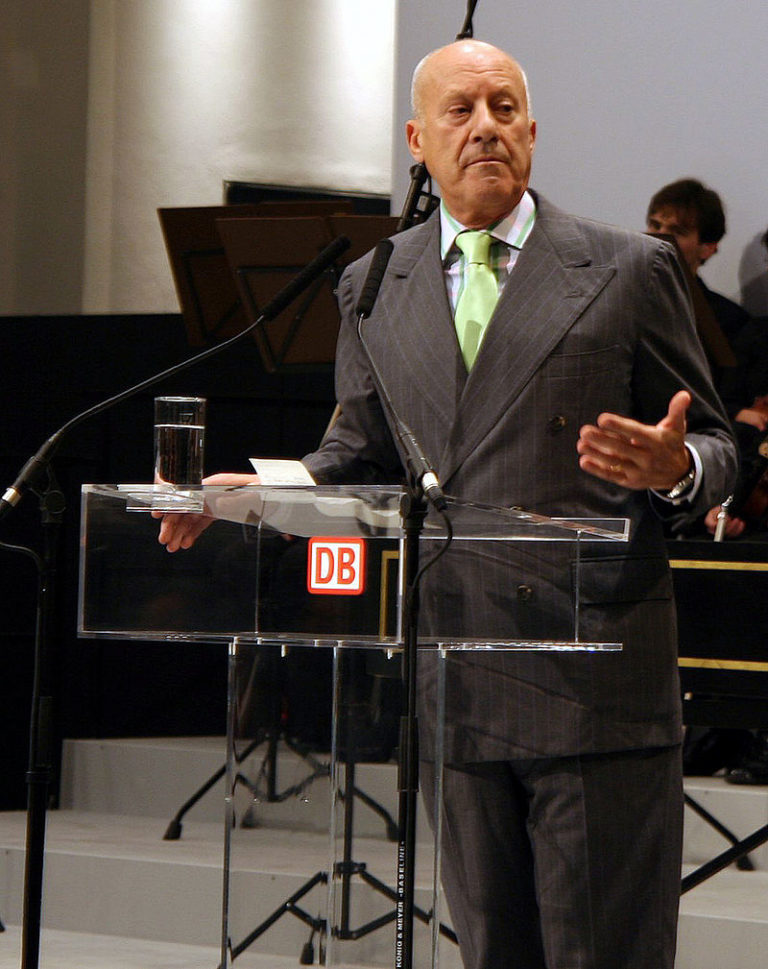Born in Manchester.
1935
Norman Foster

description
Modern English architect, one of the most famous architects of hi-tech, slick-tech, ecological architecture, Pritzker Prize laureate (1999). In his projects, he uses open aesthetic spatial structures, large planes of glass and metal, versatility of free spaces and exquisite detailing of facades and interior decoration. Norman Foster’s buildings are environmentally friendly, but at the same time pleasant to contemplate. His projects make full use of the latest technologies, both in search of high energy efficiency and excellent integration with the environment. The facilities are comfortable and have a user-friendly atmosphere; they are easy to use and have a well-developed infrastructure.
Main structures:
- Willis Faber Doomas Headquarters, Ispwich, United Kingdom of Great Britain and Northern Ireland, (1972 – 1975);
- Renault Sales Center in Swindon, Wiltshire, United Kingdom of Great Britain and Northern Ireland (1981 – 1983);
- Terminal at Stansted Airport, United Kingdom of Great Britain and Northern Ireland, (1991);
- Chek Lap Kok Airport, Hong Kong, (1992 – 1998);
- Faculty of Law, University of Cambridge, United Kingdom of Great Britain and Northern Ireland, Cambridge, (1995);
- Pavilion “Clyde Auditorium”, Scotland, Glasgow (1995 – 1997);
- Commerzbank-Tower, Germany, Frankfurt, (1997-2004);
- Hong Kong International Airport, Hong Kong, (1998);
- Canary wharf London Underground Station, United Kingdom of Great Britain and Northern Ireland, London (1999);
- Millennium Bridge, United Kingdom of Great Britain and Northern Ireland, London, (1999-2002);
- Cover-shell of the courtyard of the British Museum (reconstruction), United Kingdom of Great Britain and Northern Ireland, London, (2000);
- City Hall, United Kingdom of Great Britain and Northern Ireland, London, (2002);
- Swiss Re Building (Mary Ax Skyscraper), United Kingdom of Great Britain and Northern Ireland, London, (1996 – 2002);
- Metro Bilbao, Spain, Bilbao, (2004);
- Sage Gateshead, UK, Gateshead, (2004);
- UAE Pavilion at EXPO-2010, Shanghai, (2010);
- Hearst Tower, USA, New York, (2003 – 2006);
- Showroom, Singapore;
- Abu Dhabi Plaza – multifunctional complex, Kazakhstan, Astana, (2016);
- Hankook Technodome Research Center, South Korea, Daejeon, (2016);
- Beach Road Complex, Singapore, (2016);
- Apple Store in Regent Street, UK, London, (2016);
- Tower Varso, Poland, Warsaw, (2017);
- Apple Park Campus – Apple Headquarters, USA, Cupertino, (2017);
- Complex 3Beirut, Lebanon, Beirut, (2017);
- Apple Store in Dubai, UAE, Dubai, (2017);
- Apple Store Michigan Avenue, USA, Chicago, (2017);
- Bloomberg Headquarters, UK, London, (2017).
Features of the style of Norman Foster:
- The leading style is high-tech;
- Polyfunctionality;
- The presence of large open spaces;
- Organization of space is rational, modular.
- Using the latest materials;
- Use of mesh structures;
- Use of recycled products;
- Energy efficiency. Use of renewable energy sources;
- Environmentally friendly;
- Computing architecture.
